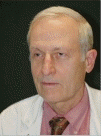Empathy
Article information


Just what is empathy, and why is it important? A brief perusal of our medical literature seeking even a remote explanation of that word revealed none in the title of surgical articles, whereas was found primarily only in medical or psychological journals [1-5]. There must be a reason that we firmly believe here needs to be overcome. The term itself comes from the German word einfühlung, which means “feeling into,” or simply entering into another’s mind or body [5]. This is a vicarious state where the individual shares another’s cognitive understanding and reasoning as well as emotional status [1,2]. Empathy can be confused with pity, sympathy, and compassion [1]; but those are not synonyms. Pity is just an acknowledgment of the plight of another being, often where their distress causes discomfort or even a condescending reaction [1]. To be sympathetic, one does have a care or concern for another’s problem, and usually a desire to improve their situation; but there is a lack of a shared perspective or emotions as to be empathetic would require [1]. Yet so close, one can understand how sympathy can indeed often lead to empathy. Compassion is more than simple empathy, perhaps better defined as also not just feeling but having a concomitant suffering, yet with an active desire to alleviate that suffering—an admirable goal for every doctor-patient relationship [1].
The exponential growth of our technological and scientifically driven surgical profession has seen the prior importance of clinical judgment assume a secondary role. Freshwater, as often was the case, is right—rather than abandoning clinical insight, it should instead be enhanced [6]. As he boldly declared, all five senses need be used to improve our perception of the patient [or perhaps any administrative personnel interaction if we dare say in today’s business of medicine]—we must see, not just look but observe; hear, but also listen; smell, and always question the odor; taste, but have appropriate opinions; and not just touch, but feel [6]. And touch will make us better physicians as we should feel for our patient to thereby become more empathetic, a quality without which in Freshwater’s opinion we should not be treating patients at all except in the most dire emergency [6].
The quality of empathy within us touches our patients’ lives, and improves not just treatment compliance but long-term outcomes—a lofty goal indeed [4,7]. Yet studies have shown that the usually initially idealist medical student by the time of graduation has lost much of this attribute [4]. Indeed, this has caused a crisis of basic trust so admitted in China between doctors and their patients if not families as well [8]. How can this be overcome? Humanities education from the beginning for medical students may be a partial answer, and that should include courses in medical sociology, medical ethics, medical psychology, and medical history [9]. The response to this recognized deficiency has seen an affirmative action seeking to enhance the training of doctors whose empathy and ethics will be brought equal to their clinical skills [8,9]. We must all not forget that doctors and nurses are not just health care providers, but first also human beings themselves [9]. This will not be an easy task, as unlike the West that values patient centered autonomy since that seems to lead to greater overall satisfaction and preferable outcomes, in East Asia non-verbal or indirect communication with a family centered model is more prevalent so the doctor must be concerned as much with the family as well as the patient [7,10]. This there has created a more hierarchical physician dominance in patient relationships rather than symbiotic [7], whereas the latter would be more desirable if it were to evolve to be instead empathetic. Unfortunately, the emphasis on patient centered outcomes such as restoration of function and an improved quality of life following any reconstructive effort so highly touted in the West, appears to have retreated from the application it deserves [11]—so this may be a universal concern.
We are the first to realize that as with anything else there will be limitations that must be respected. Moderation sometimes will be superior to excess. Uncontrolled empathy can lead to impulsive or irresponsible choices [3,5]. As medical professionals, we must always function with safety to be our guiding light [12], and not let our emotions risk impaired or irrational decisions.
Both authors understand this issue quite personally, the younger surviving metastatic thyroid cancer, and the elder loss of ambulatory capabilities from muscle paralysis [13]. Fortunately, for both of us this was a transient experience, as our caregivers stood by us and their choices guided us to the recovery we sought with great understanding. Our lot did not allow us to forget the truth of our mentor who perhaps facetiously noted “all the world’s pre-op.” A surgeon’s dream? Or nightmare? Remember, all of us are mere homo sapiens, and all at risk for the unexpected. To consistently capture the superlative outcome as was ours, why not so simply seek the power of “empathy”!
Notes
Conflict of interest
Geoffrey G. Hallock is an editorial board member of the journal but was not involved in the peer reviewer selection, evaluation, or decision process of this article. No other potential conflicts of interest relevant to this article were reported.
